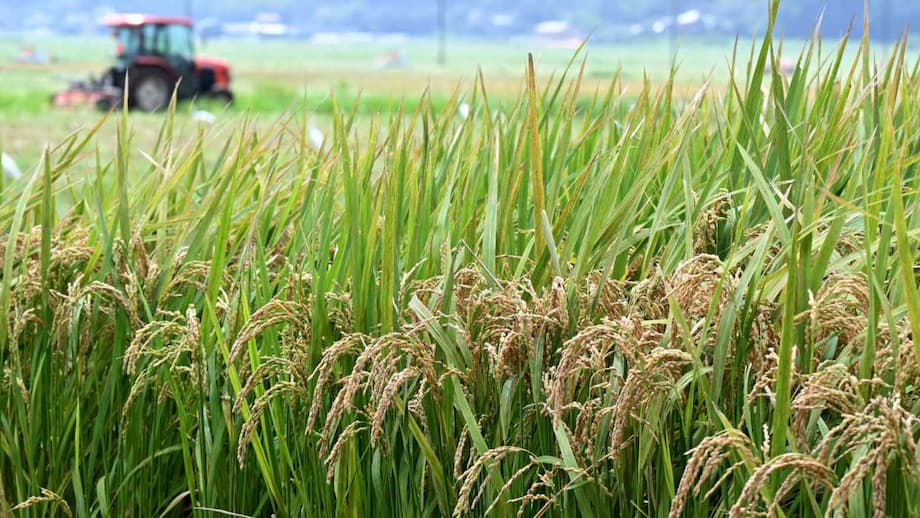Japan Reverses Decades-Old Rice Policy Amid Food Security Fears
Japan is embarking on a historic shift in its agricultural policy, abandoning decades of output restrictions on rice in favor of encouraging increased production. This dramatic reversal comes as the country grapples with soaring rice prices, supply shortages, and mounting concerns over food security in the face of climate change and global instability. The move marks a turning point for Japanese agriculture, with implications for farmers, consumers, and the nation’s future resilience.
- Japan Reverses Decades-Old Rice Policy Amid Food Security Fears
- Why Did Japan Restrict Rice Production for So Long?
- What Triggered the Policy Reversal?
- Inside the New Policy: Encouraging Production and Innovation
- Food Security in a Changing World: Climate, Imports, and Self-Sufficiency
- Political and Social Implications: Rice at the Heart of Japanese Identity
- Challenges Ahead: Can Japan Achieve Sustainable Food Security?
- International Lessons and Opportunities
- In Summary
Why Did Japan Restrict Rice Production for So Long?
For much of the postwar era, Japan’s government has tightly controlled rice production. Beginning in the 1970s, the so-called gentan policy paid farmers to leave paddy fields fallow or switch to other crops, aiming to prevent oversupply and keep rice prices stable. This approach was rooted in a desire to protect small-scale family farmers, maintain rural livelihoods, and avoid the kind of food shortages that haunted Japan after World War II.
However, as rice consumption steadily declined due to demographic changes and shifting diets, the policy became increasingly controversial. By 2024, Japan had reduced its rice production by 40% compared to 1961, even as global rice output soared. Despite an official end to the acreage reduction policy in 2018, subsidies and incentives continued to discourage rice cultivation, with nearly 40% of paddy fields left unused. This system benefited agricultural cooperatives and small farmers, but at the expense of consumers and taxpayers, who faced higher prices and, ultimately, shortages.
The Impact of Protectionist Policies
Japan’s rice market is among the most protected in the world, with tariffs on imported rice reaching as high as 778%. These measures shielded domestic producers from foreign competition but also limited the sector’s flexibility to respond to sudden changes in demand or supply shocks. Imported rice, when allowed, was typically used for processing or animal feed, not for direct consumption, further restricting the market’s ability to adapt.
What Triggered the Policy Reversal?
The catalyst for change was a perfect storm of challenges in 2024 and 2025. Record-breaking heat waves and water shortages damaged rice crops, reducing both quality and yield. At the same time, a surge in inbound tourism—over 30 million foreign visitors in 2024—boosted demand for rice-based dishes. Panic buying, partly fueled by earthquake fears, further strained supplies. The result was a dramatic spike in rice prices: by May 2025, a five-kilogram bag of rice cost ¥4,268 (about $30), nearly double the price a year earlier. For many households, especially those with lower incomes, this meant a significant financial burden.
The crisis exposed the fragility of Japan’s food self-sufficiency, which stood at just 38% on a calorie basis in 2023. While Japan is nearly 100% self-sufficient in rice, its reliance on domestic production—combined with rigid policies—left it vulnerable to climate shocks and demand surges. The government’s slow release of emergency rice reserves and reluctance to increase imports exacerbated the situation.
Public frustration mounted as supermarket shelves emptied and restaurants raised prices or reduced portions. The agriculture minister’s resignation after an insensitive remark about rice underscored the political stakes. As one expert noted,
“Rice, central to Japanese culture and cuisine, has historically triggered political upheaval.”
The government faced mounting pressure to act.
Inside the New Policy: Encouraging Production and Innovation
In August 2025, Prime Minister Shigeru Ishiba announced a sweeping policy shift: Japan would no longer discourage rice cultivation. Instead, the government would support farmers in increasing output, utilizing abandoned farmland, and expanding sales channels both domestically and for export. The Ministry of Agriculture, Forestry and Fisheries (MAFF) acknowledged its missteps in underestimating demand and pledged to improve forecasting and supply management.
The new approach includes several key measures:
- Utilizing Abandoned Farmland: The government will promote the use of idle paddy fields to boost production and prevent further land abandonment.
- Supporting Farmers: Assistance will be provided to farmers willing to increase productivity, including support for consolidating small plots into larger, more efficient operations.
- Smart Agriculture: Investment in advanced technologies such as drones and precision farming will be encouraged to improve yields and reduce labor needs.
- Expanding Exports: With domestic consumption declining, the government aims to increase rice exports, following the example of the European Union, which manages surpluses through international sales.
- Reviewing Compensation: The government is considering shifting from price supports to direct payments for farmers, aligning with practices in the United States and EU, to ensure stable incomes without distorting market prices.
Balancing Production and Prices
While increased production could help lower rice prices for consumers, there are concerns about the potential for prices to fall too far, threatening farmers’ livelihoods. The government is aware of the need to strike a balance, ensuring that farmers remain motivated to produce rice while avoiding unsustainable price drops that could drive them out of business.
Food Security in a Changing World: Climate, Imports, and Self-Sufficiency
Japan’s rice crisis is a stark reminder of the challenges facing food security in an era of climate change and global market volatility. Extreme weather events—such as the heat waves of 2023 and 2024—are expected to become more frequent, posing ongoing risks to crop yields. At the same time, Japan’s heavy reliance on imports for other staples like wheat and soybeans (80% and 90% imported, respectively) makes it vulnerable to international disruptions, as seen during the Russia-Ukraine war.
Experts argue that Japan’s focus on self-sufficiency in rice, while culturally and politically significant, must be balanced with adaptability and resilience. This includes diversifying import sources, investing in climate-resilient crop varieties, and modernizing agricultural practices. The government’s new policy reflects a recognition that rigid protectionism is no longer sustainable in the face of evolving threats.
The Role of Technology and Corporate Farming
Japan’s agricultural sector is dominated by small family farms, many of which struggle with aging populations and limited resources. However, larger corporate farms are becoming more common and are better positioned to adopt advanced technologies and scale up production. The government’s reform plan aims to support both traditional and modern farming enterprises, promoting best practices and management skills to strengthen the industry as a whole.
Political and Social Implications: Rice at the Heart of Japanese Identity
Rice is more than just a staple food in Japan—it is deeply intertwined with national identity, culture, and politics. The Liberal Democratic Party (LDP), which has ruled Japan for most of the postwar period, has long relied on the support of rural communities and small farmers. Policies that favored producer protection over consumer interests have been a cornerstone of this alliance.
The recent crisis, however, has shifted public sentiment. Many now see the old policies as outdated and responsible for the shortages and high prices. The government’s slow response and failure to anticipate rising demand—especially from tourism—have drawn criticism. As one editorial put it,
“The ministry, which sought to prevent a drop in prices, may have been too considerate of producers. It will have to reflect on its failure to incorporate the consumer’s perspective, and its slowness in taking action.”
With elections looming and approval ratings at risk, the government’s decision to embrace reform is as much a political calculation as an economic necessity. The history of rice-related political upheaval in Japan—from the 1918 rice riots to the present—underscores the stakes.
Challenges Ahead: Can Japan Achieve Sustainable Food Security?
While the policy shift is widely seen as a positive step, significant challenges remain. Japan’s farming population is aging and shrinking, with just over 1% of the population now engaged in agriculture. The total area of farmland is decreasing, and many small farmers lack the resources to invest in new technologies or expand operations. Input costs, including fertilizer and fuel, have risen sharply, squeezing profit margins.
Moreover, Japan’s strong preference for traditional rice varieties, prized for their taste but less resilient to heat and pests, has slowed the adoption of climate-adapted strains. Balancing consumer preferences with the need for resilient agriculture will be a key test for policymakers.
There are also questions about how to manage potential surpluses if production increases rapidly. The government will need to develop strategies for export promotion, storage, and market stabilization to avoid the boom-and-bust cycles that have plagued other agricultural sectors.
International Lessons and Opportunities
Japan’s experience offers important lessons for other countries facing similar challenges. The tension between protecting producers and ensuring affordable, reliable food supplies is not unique to Japan. As climate change and global market disruptions become more common, adaptive and resilient agricultural policies will be essential.
For major agricultural exporters like Canada, Japan’s policy shift could open new opportunities for collaboration in technology, climate adaptation, and trade. Canada already supplies a significant share of Japan’s wheat and soy imports, and deeper cooperation could help both countries build more sustainable food systems.
In Summary
- Japan has reversed its longstanding policy of restricting rice production, now encouraging farmers to increase output amid shortages and high prices.
- The policy shift responds to a crisis triggered by climate change, rising tourism, and rigid protectionist measures that left the market unable to adapt.
- New measures include utilizing abandoned farmland, supporting farmers, investing in smart agriculture, and expanding exports.
- The government aims to balance increased production with stable prices to protect both consumers and farmers.
- Japan’s experience highlights the need for adaptive, resilient food policies in the face of climate and market uncertainties.
- The reform has significant political, economic, and cultural implications, with rice remaining central to Japanese identity and food security.












